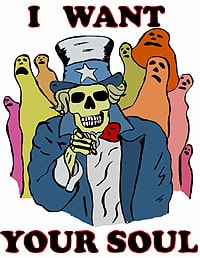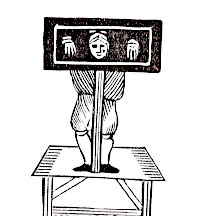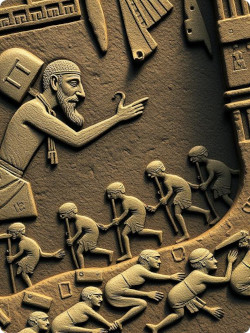The questions on primitive combat, particularly throwing, from McCorman, has begged the question that has been unasked as far as I know, from what walk of life did the men of Alexander’s army come from?
And, to our study of how things are done in war in relation to the source of manly material doing these things, what activities suited what classes of men to the military tasks?
The class of the man determined his ability to outfit himself and his suitability for types of mobility and logistical tasks.
Much of the makeup of Alexander’s army, so far as it is understood, is:
-The method of file, line and column combat with the sarissa, that is the Phalanx, “the roller” well illustrated in numerous books
-The method of heavy horse combat developed by Phillip and perfected by Alexander in the form of the Companions, less well understood.
-Hoplite warfare practiced by Alexander’s best foes, being Greek mercenaries, less well understood than the phallanx. While the guards or foot companions were armed as traditional hoplites, it is my contention that their use has been misunderstood.
-The combination of these and lesser understood troop types, such as the Agrianes, in major actions is well understood.
How these men were mustered, what their trade had been before being marshaled as members of the most successful expeditionary force ever launched, is vague to opaque.
To understand the manpower makeup of these forces we will need to draw from medieval and early modern military traditions, which were closer to the Macedonian method than the Persian [which they fought in the late 300s B.C.] or Roman [they fought in the 200s and 100s B.C.] armies of antiquity. While the army mustering methods of the Greek City states are related, these apply to only 3 battalions of Alexander’s men, being his personal guards and the 2nd and 3rd guards battalions.
Macedonia was a feudal society, more like the warrior nations of the Iliad, Senguko Edo Japan, and the Confederate States of America or Frederick the Great’s Prussia, then the mercenary armies of Alexander’s successors, Carthage, and Rome of Late Antiquity. Macedonian manpower was also much different than the mass conscript armies of Republican Rome, which had more in common with the armies of the United States of America into the Industrial Age.
…
Royal Forces
Phillip and Alexander after him had royal lands. These provided every type of troops. Weapons will be described under provincial forces.
-1. Mounted scouts, a small shadowy contingent of heavy horseman deployed in a light capacity. This would include volunteers from allied nations.
-2. Guards, or foot companions. I suggest that officers and front line soldiers of the foot companions were drawn from free and tenant farmers who could not afford horses, from cowherds, swineherds and artisans like carpenters and masons who drew a wage or may have been royal servants. These included volunteers from small allied states seeking honor and glory.
-3. Archers and slingers, drawn from huntsmen and shepherds, just as jaegers and riflemen were drawn from huntsmen in 1700s Europe. These men were frontiersmen of the highlands, free but poor, wearing skins, being hunters, goatherds and shepherds. They would also manage the hounds. These included mercenaries and volunteers from allied states. I suggest that Agriane forces included archers and that some would have been included in the archer contingent. The archers were initially led by a Cretan. A significant portion of these archers would have been slaves of lower Scythian class, purchased and then mustered into the ranks as paid conscripts, much like Russians in 2025 are employing North Korean units against the Ukrainians. This 1,000 man force was probably broken into five contingents of varying size: Macedonian, Cretan and other bows for hire, Scythian slaves, Agrianian allies, and a body of slingers drawn from Macedonian shepherds and goatherds. The Macedonian contingent was most likely divided into provincial units for operational flexibility.
-4. It is not clear to me how heavy horseman were drawn as Companion, if at all, from the royal estates. These would have been few and probably constituted the scouts and Alexander’s personal horse guards, or at least their grooms. For men of other nations volunteered to serve as Alexander’s personal guards, which began as 8 and increased to 9. According to Plutarch, the lords of the various provinces were hard pressed to raise troops of companions and other troops from their domains and that he donated his royal estate revenue, manpower and, probably most important, horse stock, for them to bring these crucial bodies of fighting men up to strength.
Alexander’s army, in terms of horsemen, looked much like Charlemagne’s feudal force in The Song of Roland. These men were heroic in the extreme, and Alexander, their King, treated them as social equals and put battle plans before them before action.
One will note that there is a shadow army of slaves, just as there were slaves attending the CSA forces in the 1860s, and as in that struggle, might be eligible for freedom through service.
…
Provincial Forces
Let us start from the top:
-1. Companions were knights, heavy horsemen, not only free but lords in their own right, attended by a groom, a slave, possibly eligible to become free and something like a medieval squire, when becoming 21 and/or distinguishing himself. This is a possible source of replacements for losses in the field. The groom takes care of his master’s horse, his horse, and the remounts, and held his spare spear. These men wielded a cornel wood spear, a xyston, possibly a light shield that could be slung on the back or used to dismount and fight as a hoplite, and a sword, either a kopish [big kukri] or xiphos [reaper], a sword that tapers outward to a wide sweet spot and then to a short point. The companions were the hammer of the army, the psychological force for breaking the enemy will. Shields used in dismounted situations such as sieges, might have been held by grooms.
-2. Foot Companions, if there were any men from the provinces who could afford to arm themselves like traditional Greek hoplites, they would be mustered out into the three guards battalions. I imagine this was not encouraged, and that such exceptional yeomen, would be encouraged to serve in the phallanx brigades as file leaders, file closers and frontline men. Guards wielded an ash spear or dory of the same length and heft as the xyston, a concave arm strap aspis, the heaviest round shield design in history, and a sword, most likely an aor, the tapering straight sword of Achilles. Each such man would be attended by a slave, possibly a youth eligible for freedom perhaps, or an old servant of the household who was once a soldier and had been sold into captivity after defeat. The slave carried the guard’s armor and personal effects on campaign and would double as a medic. The 3 royal battalions were the hinge of the army between the hammer and the anvil, and constituted the main operational force in smaller battles and sieges.
-3. Phallangites were drawn from small land owners who could not afford to mount themselves and a groom, also share croppers, freemen or freedmen. [1] These men wielded the 18 foot sarissa of cornel wood, a socketed weapon carried in two sections which may have had uses such as ladder fabrication in the field, hauling gear over the shoulder, using the front half in close terrain, etc. The shield was a reduced size aspis slung over the front shoulder as the sarissa required two hands. This was probably the shield used by the dismounted companions as well, such as in Philotus' foraging detachment at Pelium. The sword would be small, either a phasgonon [leaf shaped blade] or xiphidon [mini reaper], small swords of about bowie knife size good for stabbing or chopping in close. These men were the anvil of the army and were well capable of building projects like Roman legions. The phallanx or roller was the moving human fort, the anvil of the army, that could not be broken from the front by methods available to any known enemy.
-4. Archers were unarmored, meaning they had no shields, and seem to have used composite bows of Scythian type and were greatly feared. Their side arm would be a machera [cleaver], a machete, the cheap sword of antiquity. A huntsmen or goatherd from the provinces would be mustered by provincial units into the single archer brigade. The archers were the killers, deployed in front of Alexander, first, to shoot enemy officers in the face and drive off enemy missile troops. Even heavy infantry were reluctant to attack them, which indicates they aimed for the face and the feet. There extreme aggression against horsemen, indicated that they shot horses by preference. These were also used for night fighting and pursuit, indicating that they probably used a mix of light axes, big knives and small swords as hand weapons. These men served as scouts, night pickets and sentries and were used more often than any units but the Agrianes and Guards. Archers were “unprotected” “unarmored” troops, meaning without shields, and suffered terrible casualties in close combat, yet ironically inflicted higher levels of death and injury then heavier troops. It is likely that each archer contingent had a small body of youths and old men, many slaves, who fabricated, repaired, carried and gathered arrows.
-5. The Agrianes will have their own treatment.
Armor has also not been treated here and will be addressed in its own section.
Overall, Alexander’s force had men serving from every rural trade, able to build, hunt, harvest raw grain and also herd the many animals necessary to carry supplies and meat on the hoof for the army. This mixed force was ideal for colonization and city building, and, as such, like the later Roman armies which engineered roads and cities, a terror to defend fortified positions against.
This brings us to weapons, used from the earliest campaigns of Alexander, that seem not to have been organized in named units, though seem to fall under the direct management of Alexander in association with the archers: artillery. These engines were carried, probably by mule or other equine. The Romans seemed to have used asses for this. It seems that these crews were protected by the archers who they worked in unison with in the field and at sieges. Like the later Mongols, it is likely that these crews were a mixture of professional soldiers of fortune, actual scientists of war, being paid to run crews of slaves, perhaps their own trained, private bondsmen and/or youth apprentices, and also captured siege engineers spared to serve their conqueror.
…
Notes
-1. A free man owns no property. A freedman was a slave and has earned a place among the ranks of landless men, one debt from slavery, eager for loot, slaves and glory.











